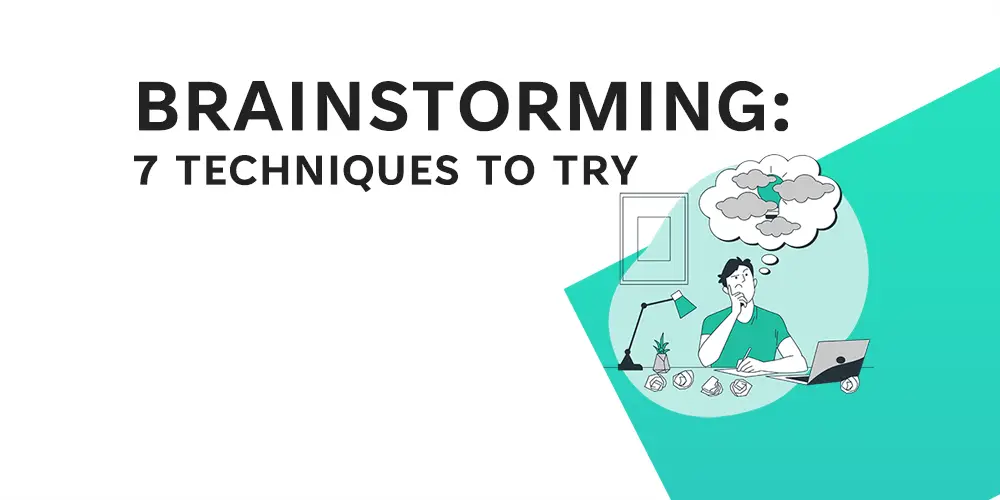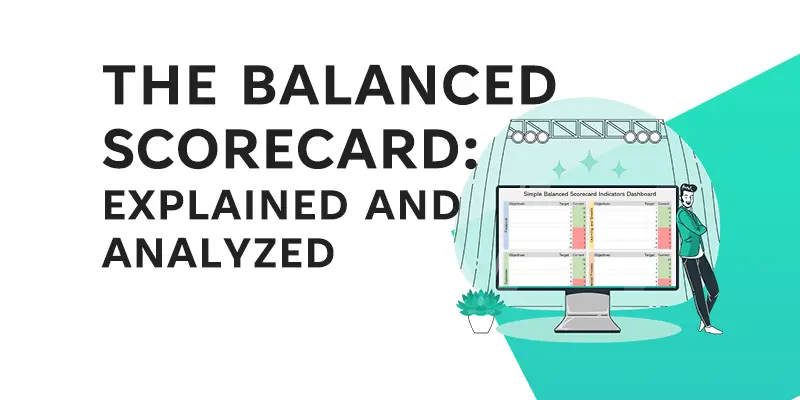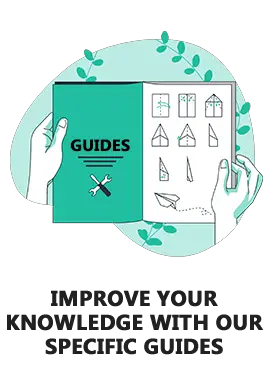Do you ever get stuck in a creative rut, unable to come up with new ideas? Brainstorming is a powerful tool for unlocking creativity and generating new possibilities, but it is easy to get stuck in old patterns and routines. You’ve come to the right place if you want to shake things up and try some new brainstorming techniques.
In this post, we’ll look at seven different brainstorming techniques that can help you and your team break through mental blocks and come up with new ideas. Each technique, from mind mapping to random word association, has its own distinct approach and benefits. These methods can help you tap into your creativity and see problems from different perspectives, whether you’re a solo creative or part of a team.
So grab a notebook and a pen, and let’s get started brainstorming. By the end of this post, you’ll have a slew of new techniques to experiment with and figure out what works best for you.
Table of Contents
Method 1: Mind Mapping
What is Mind Mapping
Mind mapping is a popular brainstorming technique that lets you visually map out your ideas and their connections. Mind mapping is essentially a method of organising your thoughts in a non-linear, free-flowing manner, which can help you generate new ideas and see patterns you might not have noticed otherwise.
How to Create a Mind Map

It is simple to make a mind map. Begin by outlining a central concept or problem in the centre of a piece of paper. Draw lines outwards from the central idea, noting related ideas or sub-problems on each line. These ideas can then be subdivided into more specific ideas or sub-branches, resulting in a tree-like structure of interconnected ideas.
Consider the following scenario: you’re trying to come up with new business ideas. You could begin with the central concept of “new business,” then expand into areas such as “product ideas,” “target market,” and “marketing strategy.” You can then expand on each branch with more specific ideas, such as “online advertising,” “social media marketing,” or “influencer partnerships.”
Benefits of mind mapping
Mind mapping has numerous advantages. Visualizing the connections between ideas allows you to see patterns and relationships that may not be obvious at first. This can aid in the generation of new ideas as well as the refinement of existing ones. Mind mapping also allows you to reorganise your ideas quickly and easily as needed, making it a versatile and adaptable technique. Furthermore, because mind mapping is a non-linear approach, it can assist you in breaking free from traditional thinking patterns and exploring new ideas in a more free-flowing manner. Overall, mind mapping is an effective tool for generating and organising ideas that can be applied to a variety of creative projects.
Method 2: Reverse Brainstorming
What is Reverse Brainstorming
Reverse brainstorming is a type of brainstorming that is particularly useful for problem-solving. Instead of coming up with solutions to problems, reverse brainstorming involves coming up with ways to cause or exacerbate the problem. This can assist you in identifying potential obstacles and developing more effective solutions.
Begin reverse brainstorming by identifying a problem or challenge that you are currently facing. Then, rather than brainstorming solutions, brainstorm ways to make the problem worse. For example, if you’re trying to come up with a new product idea but are limited by resources, you might consider brainstorming ways to make your constraints even more severe.
Difference between Reverse Brainstorming and Traditional Brainstorming
The difference between reverse brainstorming and traditional brainstorming is that in reverse brainstorming, you intentionally try to think of ways to make the problem worse, rather than ways to solve it. This may seem counterintuitive at first, but it can assist you in breaking free from traditional thought patterns and generating more creative solutions.
Examples and Benefits of Reverse brainstorming
Consider this scenario: you’re working on a project with a tight deadline, but you’re finding it difficult to stay focused and motivated. Instead of brainstorming ways to stay focused, consider ways to make it even more difficult to focus, such as adding more distractions or increasing the workload. This exercise can assist you in identifying the underlying causes of your lack of focus and developing more effective strategies to address them.
Reverse brainstorming can help you think outside the box and come up with more creative solutions. By purposefully making the problem worse, you are forced to consider alternative approaches and potential obstacles that you might not have considered otherwise. Reverse brainstorming can also aid in the early identification of potential roadblocks, allowing you to address them before they become larger problems. Overall, reverse brainstorming is a powerful problem-solving technique that can be applied in a variety of situations.
Method 3: SCAMPER
What is SCAMPER
SCAMPER is a creative thinking technique for generating new ideas by challenging you to consider ways to modify or adapt existing ideas. Each letter of the word “SCAMPER” represents a different technique for sparking creative ideas.
Each letter represents the following:
- S = Substitute: Think about how you could replace one component of an existing idea with something else. For example, if you’re brainstorming new product ideas, consider how you could replace a traditional component of the product with a new material or technology.
- C = Combine: Consider how you could combine two or more existing ideas to create something new. For example, you could create a new dish by combining two different types of food.
- A = Adapt: Consider how you could modify an existing idea to make it more appropriate for a new context or audience. For example, you could use a marketing strategy that worked well for a different product to promote your own.
- M = Modify: Consider how you could improve or personalise an existing idea. For example, you could change a traditional recipe to include new ingredients or cooking techniques.
- P = Put to another use: Consider how you could use an existing idea in a different context or for a different purpose. For example, you might use a household item for a completely different task than it was originally intended.
- E = Eliminate: Consider how you could simplify or improve an existing idea by eliminating or removing elements of it. For example, you could eliminate a step in a manufacturing process to save time and money.
- R = Reverse: Think about how you could flip an existing idea to create something new or unexpected. You could, for example, reverse the order of a traditional recipe or process to create a one-of-a-kind dish or product.
Example of the SCAMPER Technique
Assume you’re trying to come up with new product ideas for an outdoor gear company. Here’s an example of how the SCAMPER technique could be used to generate ideas:
S – Substitute: What could you use in place of the product?
- Replace traditional fabric with a more sustainable and environmentally friendly option, such as recycled plastic or bamboo fibre.
- To make the products stand out, replace the standard colour palette with brighter, more vibrant colours.
C – Combine: What else could you do with the product?
- Combine a tent and a hammock to make a versatile and comfortable outdoor sleeping option.
- Combining a backpack and a portable solar panel allows hikers and campers to charge their devices while on the move.
A – Adapt: How might you modify the product?
- Make a hiking shoe more suitable for cold weather by adding extra insulation and a waterproof outer layer.
- Make a camping stove more portable and lightweight so that it can be carried on long hikes.
M – Modify: What changes could you make to the product?
- Create built-in storage compartments for snacks and drinks in a camping chair.
- Make a tent more modular so that campers can add and remove sections as needed.
P – Put to another use: What other uses could the product have?
- A camping lantern can be used to add ambiance and lighting to an outdoor party or gathering.
- A hiking backpack can be used to transport books and supplies for a student or commuter.
E – Eliminate: What could you get rid of in the product?
- Remove bulky zippers and closures from a backpack in favour of a streamlined and lightweight design.
- Reduce the number of bells and whistles on a camping stove to simplify the design and make it more user-friendly.
R – Reverse: What could you do with the product in reverse?
- Reverse the direction of the tent’s door to create a one-of-a-kind and unexpected layout.
- Reverse the design of a hiking backpack to create a “frontpack” that allows users to access their gear without taking the backpack off.
Benefits of using SCAMPER to Think Creatively
There are numerous advantages to using SCAMPER to think creatively. SCAMPER can help you break out of traditional thinking patterns and generate more unique and innovative ideas by challenging you to modify or adapt existing ideas. Furthermore, SCAMPER is a versatile technique that can be applied in a variety of contexts, from product design to marketing to problem-solving. Overall, SCAMPER is a useful tool for anyone who wants to think more creatively and come up with new ideas.
Method 4: Rolestorming
What is Rolestorming
Rolestorming is a brainstorming technique in which participants are encouraged to take on different perspectives and roles in order to generate new ideas. It’s an excellent way to foster empathy and help students see problems from different perspectives.
How to assign roles
Here’s how to go about it:
- Define the problem or challenge you wish to address.
- Assign various roles to each participant. For example, if you’re brainstorming new product ideas, you could assign roles like customer, product designer, marketing manager, and so on.
- Assign each participant a role and have them brainstorm ideas from that perspective. Encourage participants to consider the problem or challenge from the perspective of their assigned role.
- Repeat the brainstorming process by switching roles. This enables each participant to approach the problem or challenge from a different angle and generate new ideas.
Assume you’re part of a team working on a project to improve public transportation in a city. You could assign roles like bus driver, passenger, traffic planner, city council member, and so on. After that, each participant would take on their assigned role and brainstorm ideas for improving public transportation from that standpoint.
Benefits of Rolestorming
The advantages of roleplaying are numerous. Rolestorming can help generate a wider range of ideas and encourage empathy and understanding among team members by encouraging participants to take on different roles. Furthermore, rolestorming can aid in the breakdown of traditional hierarchies and promote more collaborative and creative problem-solving. Overall, rolestorming is a useful technique for anyone looking to generate new ideas and solve problems from various angles.
Method 5: Crawford’s Slip Writing Method
What is Crawford’s Slip Writing Method
Crawford’s Slip Writing Method is a brainstorming technique in which ideas are written down on slips of paper and then chosen at random for discussion. It’s an excellent way to ensure that everyone has an equal opportunity to contribute and generate a diverse set of ideas.
How to use the method and provide an example
Here’s how to apply the technique:
- Define the problem or challenge you wish to address.
- Give each participant a stack of paper slips.
- Set a time limit for each participant and ask them to write down as many ideas as they can on the slips of paper.
- Gather all of the slips of paper and mix them together.
- Select slips of paper at random and discuss the ideas written on them. Encourage participants to build on each other’s ideas and to come up with new ones based on the ones chosen.
- Repeat the process until you’ve gone over all of the slips of paper or you’ve come up with enough ideas.
Assume you’re part of a team developing a marketing campaign for a new product. Crawford’s Slip Writing Method could be used to generate slogans or taglines. Each participant would write down as many ideas as they could on slips of paper, which would then be mixed up and randomly selected for discussion.
Benefits of the method
Crawford’s Slip Writing Method has numerous advantages. The method ensures that a wider range of perspectives and experiences are represented by allowing anyone to contribute ideas. Furthermore, the random selection process can aid in the generation of unexpected ideas and encourage creativity. Crawford’s Slip Writing Method is an excellent technique for anyone who needs to generate a large number of ideas quickly and fairly.
Method 6: Rapid Ideation
What is Rapid Ideation
Rapid ideation is a powerful brainstorming technique in which participants are encouraged to generate as many ideas as possible in a short period of time. This technique breaks down mental barriers and encourages creative thinking by giving participants a time limit and asking them to come up with as many ideas as they can. Rapid ideation is especially useful when you need to generate a large number of ideas quickly, such as when dealing with a complex problem or a tight deadline.
How to use Rapid Ideation
Here’s how to go about it:
- Define the problem or challenge you wish to address.
- Set a time limit and ask participants to come up with as many ideas as they can in that time frame. Encourage participants to write down even their most outrageous or seemingly impossible ideas.
- When the timer runs out, have each participant share their thoughts with the group. Encourage participants to build on one another’s ideas and to come up with new ones based on what others have shared.
- Repeat the process until you’ve run out of ideas.
Difference Between Rapid Ideation and Traditional Brainstorming
The emphasis on speed distinguishes rapid ideation from traditional brainstorming. Rapid ideation is intended to generate a large number of ideas quickly, without regard for feasibility or practicability. This can aid in the removal of mental barriers and the promotion of creativity.
Assume you’re part of a team developing a new product idea. You could use rapid ideation to generate a large number of potential product features or use cases. Each participant would come up with as many ideas as they could in a given amount of time, and then the group would share and expand on these ideas to come up with even more.
Example and Benefits of Rapid Ideation
The advantages of quick ideation are numerous. Rapid ideation can help to break down mental barriers and encourage creativity by focusing on generating a large number of ideas quickly. Furthermore, the technique can aid in the generation of unexpected or unconventional ideas that would not have been considered in a more traditional brainstorming session. Overall, rapid ideation is a useful technique for anyone looking to generate a large number of creative ideas quickly.
Method 7: Random Word Association
What is Random Word Association

Random word association is a highly effective brainstorming technique that allows participants to generate new ideas by beginning with a random word. Participants in this technique are asked to write down a random word and then brainstorm ideas related to the word. This technique helps to unlock creativity and generate new and unexpected ideas by forcing participants to think outside of their usual patterns of thought.
The random word can be anything from an object to an abstract concept, and the generated ideas can be literal or abstract. The beauty of this technique is that it encourages participants to form new connections and consider unconventional solutions that they might not have considered otherwise. Random word association is a simple yet powerful tool that can help you unlock your creativity and generate innovative ideas, whether you’re working on a new project, trying to come up with a new business idea, or simply looking for a new perspective.
How to use the Method
Here’s how to go about it:
- Choose a word at random. You can either use a random word generator or choose a word from a dictionary or thesaurus.
- Make a note of the word on a piece of paper or a whiteboard.
- Create as many ideas as you can that are related to the random word. Encourage participants to consider all possible connections between the word and the topic at hand.
- Rep with additional random words to generate as many ideas as possible.
Assume you’re a marketing team tasked with developing a new advertising campaign for a clothing brand. You could start with the word “ocean” and use random word association to generate ideas. From there, you could come up with ideas like “beachwear,” “waves,” “sailboats,” and “sea creatures,” all of which could be incorporated into the advertising campaign.
Benefits of the Method
There are numerous advantages to random word association. The technique can help to spark creative connections and generate unexpected ideas by using a random word as a starting point. Furthermore, the technique can aid in the removal of mental barriers and encourage participants to think more broadly and creatively. Overall, random word association is a useful technique for anyone who wants to come up with new and unexpected ideas.
Conclusion
Brainstorming is an effective method for releasing creativity and generating new ideas. You can encourage creativity, foster collaboration, and generate innovative solutions to even the most difficult problems by using a variety of techniques such as mind mapping, reverse brainstorming, SCAMPER, rolestorming, Crawford’s Slip Writing Method, rapid ideation, and random word association.
While each of these techniques has its own set of advantages, they all have the same goal in mind: to promote creative thinking and idea generation. By incorporating these techniques into your brainstorming sessions, you can tap into your team’s full creative potential and generate new and exciting ideas that will propel your organisation to new heights.
So, the next time you face a difficult problem or a creative roadblock, try one of these seven brainstorming techniques and see what new ideas emerge. Who can say? You might just discover the next big idea that propels your company to success.








